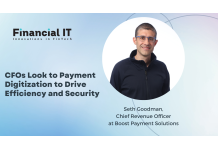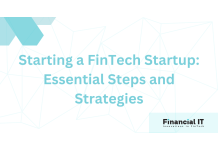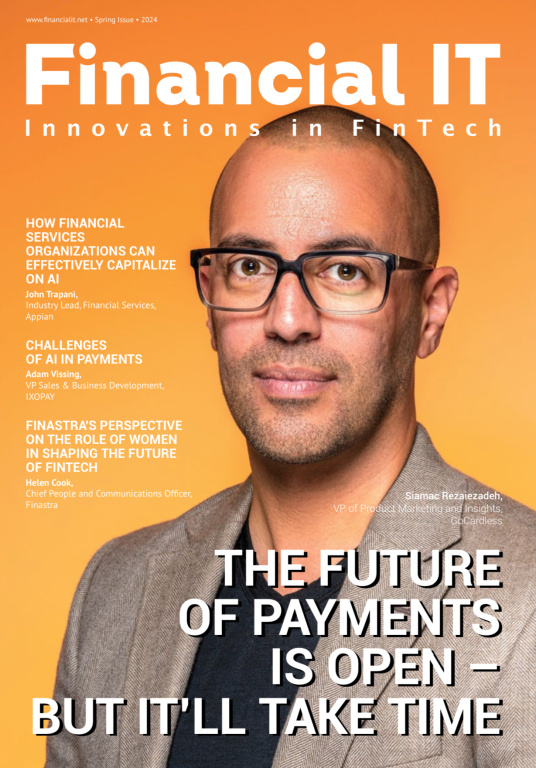Why Embedded Finance is the Next Big Thing in Fintech

- Korbinian Krainau, Associate Managing Director, Strategy at Publicis Sapient
- 22.03.2024 11:45 am #embeddedfinance #ecommerce #payments
Embedded finance is integrating financial services products seamlessly into non-financial journeys e.g., of retailers, e-commerce platforms, B2B companies, or even car interfaces. The promise is to reduce friction for customers, foster growth for financial institutions, and create alternative revenue streams for non-financial brands. While the idea of combining financial and non-financial offerings is not entirely novel, dating back to co-branded credit cards and traditional point-of-sale finance, the advent of decomposable architecture patterns has significantly facilitated the integration of financial products into digital non-financial journeys. This development has given rise to noteworthy players, especially in the payments sector (e.g., Stripe) and retail lending arena (e.g., BNPL players like Klarna).
Nevertheless, innovation in embedded finance, particularly beyond the realms of e-commerce payments and Buy Now, Pay Later (BNPL) offerings, has scaled infrequently in recent years, falling short of optimistic projections. Notably, banks have exhibited a slower and more cautious approach than anticipated in the execution of their ambitious embedded finance strategies, and some are choosing to roll back existing partnerships, as exemplified by the case of Goldman Sachs and Apple around the Apple Card.
Launching and scaling of embedded finance propositions face several practical hurdles. These include potentially imbalanced risk-reward profiles, disparities in the pace of change, and gaps in comprehension of blended propositions between FS and non-FS firms. Non-FS enterprises understand their customers' needs well, yet they tend to face challenges in imagining how financial products can be woven into non-FS offerings to strengthen the proposition and generate additional value for the business. Conversely, FS firms often lack a nuanced understanding of customer behaviors beyond the financial services realm and struggle to establish a common language with their non-FS counterparts when exploring joint value propositions. Effectively bridging these comprehension gaps will help to sharpen and accelerate the development of innovations in embedded finance.
One promising frontier within the embedded finance landscape is "cardless" retail payments, enabled by P2P or open-banking transactions, positioned at the intersection of loyalty schemes. These propositions are underpinned by the prospect of cost savings for both retailers and customers, achieved by cutting out card network fees. Businesses further benefit from low-cost funding sources provided by proprietary digital wallets, as exemplified in the Starbucks wallet case. For customers, these solutions enhance convenience by seamlessly integrating loyalty components, such as automated point accrual during transactions and customized offers. For cardless payment offerings to thrive they must surpass the appeal of traditional card payments, which boast strong brand recognition, widespread acceptance, and frequently feature established loyalty programs.
To unlock the potential of cardless retail payments, both financial and non-financial entities should collaboratively address five questions:
1. Financial Incentives: Determine how to incentivize customers to opt for proprietary payment methods, potentially by distributing savings on card fees in the form of loyalty points, top-up bonuses, or interest on funds held in a digital wallet.
2. User Experience: Create an appealing user experience within a mobile app that integrates the payment mechanism with loyalty schemes. This may involve incorporating special offers, savings pots, and other features that drive customer engagement.
3. Customer Conversion: Develop strategies to convert payment users into customers of additional products offered by the financial services provider, thereby enhancing the provider's ability to invest in and evolve the proposition.
4. Underlying Architecture: Design a flexible underlying architecture that integrates banking payments capabilities with the technology stack supporting the non-FS loyalty scheme.
5. Delivery and Change Model: Establish a robust delivery and change model that facilitates continuous evolution of the blended proposition with minimal friction between financial and non-financial entities.
Addressing these questions in the context of cardless retail payments will increase the likelihood of customer uptake and commercial value-add. As the industry continues to evolve, collaboration and strategic alignment between financial and non-financial brands more broadly will be crucial to unlocking the full potential of embedded finance and driving sustained growth in the sector.






















